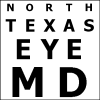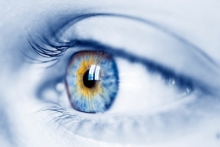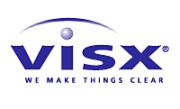Laser Vision Correction
Laser Vision Correction is the generic term for a group of procedures that use the excimer laser to reshape the cornea in order to change the way light is focused on to the back of the eye, reducing the need for corrective eyeglasses.
Photorefractive keratectomy (PRK) was the first performed in Greece in 1989. With PRK, the corneal epithelium, the cells that cover the cornea, is mechanically removed to create a treatment bed for the laser. The excimer laser is applied to reshape the cornea and a bandage contact lens is placed. The epithelium then grows back over a period of 5-7 days. During this time there is some discomfort and vision is blurry; best vision usually occurs around three weeks after the procedure. Epi-LASIK and LASEK are hybrid procedures that combine features of PRK and LASIK. In some cases, PRK may be safer than LASIK, especially in patients with thin corneas or higher refractive errors. Due to the numerous refinements that have been made to PRK over the years, it is now often referred to as Advanced Surface Ablation.
Laser In-Situ Keratomileusis (LASIK) was first performed in 1991. With LASIK, a protective flap is cut into the cornea, using an automated blade called a microkeratome or using a femtosecond laser (IntraLase). The protective flap is then moved out of position, and the laser correction is performed as in PRK. Afterwards, the flap is repositioned. This greatly reduces the post-operative recovery time and level of discomfort. Most patients will have a mild foreign body sensation (the eyes feel dry) for the first month after surgery and will use artificial tears to keep the eyes well lubricated. Best vision usually occurs by one week after the procedure, although it may fluctuate over the first month.
With either PRK or LASIK, some patients may notice increased glare or haloes around lights at night. Larger treatment areas and the advent of CustomVue and other wavefront-guided treatment protocols have greatly reduced this risk. In Conventional laser surgery, your glasses prescription guides the treatment. With CustomVue, a machine projects a grid of lights into the eye and brings each point into focus. This allows the laser to preferentially treat steeper or flatter areas of the cornea, yielding a result that is truely customized to your individual cornea.
Laser vision correction does not correct for presbyopia, a condition that everyone develops between the age of 40 and 50 where they need reading glasses to see up close. This is a normal aging process of the human lens. If you have both eyes corrected for distance, you will need reading glasses at some point. If you are over 40 and do not want to wear reading glasses, monovision may be an option. This is where one eye is corrected for distance and the other is corrected for reading vision. We can simulate this for you with contact lenses if you desire.
Some patients, especially those with higher levels of myopia or hyperopia, may need a second laser treatment, since healing can be variable between individuals.
Patients who are pregnant, nursing, or expect to be pregnant within the next three months are not candidates for laser vision correction due to the fact that hormonal fluctuations change the shape of the cornea. Patients with collagen vascular diseases (i.e. rheumatoid arthritis) and diabetes may not be good candidates unless their diseases are under good control. Certain medications, such as Isotretinoin (Accutane) or Amiodarone hydrochloride (Cordarone), may also affect your ability to have successful laser vision correction. Patients with untreated dry eye syndrome or those whose pupils dilate to an abnormally large degree in the dark may not be good candidates for surgery.
The single most important step for laser vision correction is to determine whether or not you are a good candidate. There is no substitution for a thorough preoperative evaluation by a knowledgeable clinician. To determine whether or not you might be a candidate for surgery, please call my office at 972-215-7500 to schedule an evaluation or click the button below.






